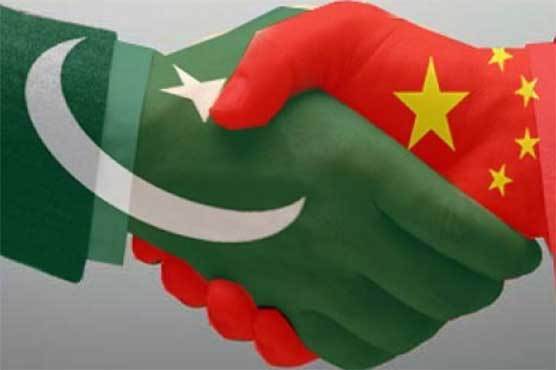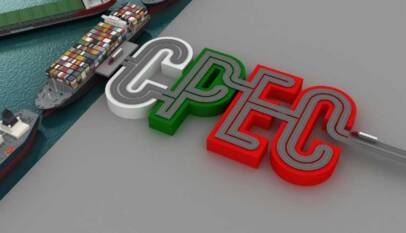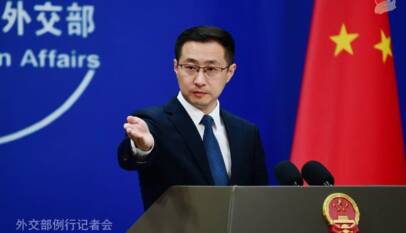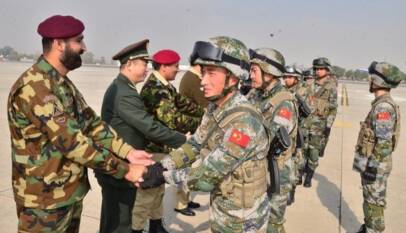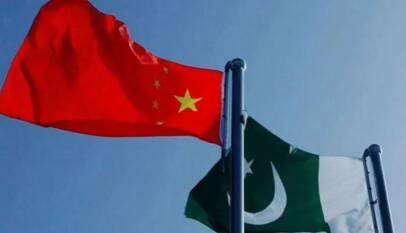CPEC has revamped Pakistan’s economy and offered framework for sustainable growth
CPEC has created a great symbiosis between Pakistan and China. It helped Pakistan transform while attaining sustainable growth. The recent meeting of 9th Joint Cooperation Committee (JCC) under the CPEC is another successful step toward economic reliance. Firstly, Main Line-I Railway project was approved in the JCC meeting which is another leap towards the modern railway system which would bring ease the travel and speed the passenger and cargo trains. ML-I will reduce the travel distance from Lahore to Karachi from 26 hours to 12 hours. Secondly, work on Eastern Corridor of CPEC is underway as the Sukkur-Hyderabad (M-6) road will be developed on the Build-Operate & Transfer (BoT) model under the Public-Private Partnership with a Chinese company. Thirdly, CPEC's Zhob-Quetta section of road which is part of the Western route was inaugurated this year whereas the remaining D.I. Khan- Zhob section is under construction. Fourthly, Havelian-Mansehra section of Karakorum Highway (KKH)-II has become operational on November 18 which would shorten the travel distance between Abbottabad and Islamabad from 3 hours to 30 minutes. Additionally, JCC meeting also reviewed the proposal for the revival of Pakistan Steel Mill (PSM) which would fulfil the steel demand for the ML-I railway project. Moreover, CPEC's energy projects added 30% of power to the national grid besides, fulfilling the country's demand. Finally, the Gwadar Free Zone has successfully locked the 20 resident enterprises with a direct investment of $600 million. These CPEC dimensions clearly state how CPEC is helping Pakistan inclusive socio-economic development.
Former UN secretary-general Ban-Ki Moon once said that sustainable development is the pathway to the future we want for all as it offers a framework to generate economic growth, achieve social justice, exercise environmental stewardship and strengthen governance.
China, Pakistan Economic Corridor (CPEC) is key to Pakistan’s yearn for achieving sustainable growth that has already transformed the violence-hit country into an emerging economic giant.
The successful recent meeting of 9th Joint Cooperation Committee (JCC) of the CPEC helped the country take another leap towards its goal of gaining economic reliance as the officials of both China and Pakistan reiterated their commitment for progress on ongoing and planned projects under CPEC.
The Chinese delegation at the 9th JCC was the biggest in number as compared to previous delegations which shows commitment of China to take cooperation with Pakistan to new highs.
Both the countries made significant development on the proposals forwarded by six Joint Working Groups, which included the industrial cooperation, transfer of technology and cooperation in agricultural, mineral, oil and gas and steel sectors.
The major development in the 9th JCC was related to the much-awaited mega railway infrastructure project, ML-I, which is likely to see practical development within the next 3 to 6 months.
ML-I project is to facilitate smooth movement of passenger and cargo trains at a fast pace cutting distance from Lahore to Karachi from 26 hours to approximately 12 hours, bringing in a transformation to the country’s ailing railway system.
The recently formed CPEC Authority would provide one-window for all CPEC related projects putting them on a fast pace and remove all procedural bottlenecks and bureaucratic hurdles.
The government also plans to build the remaining portion of the eastern corridor of CPEC from Sukkur to Hyderabad (M-6) in Build-Operate & Transfer (BoT) mode under the umbrella of Public-Private Partnership with a Chinese company.
This year in March, the Zhob-Quetta section of the Western Corridor was inaugurated and now the remaining portion of DI-Khan-Zhob is being built on a fast pace.
Pakistan imports steel worth $ 4 billion. However, with the development and revival of its own Steel Industry. Revival of Pakistan Steel Mills would also help the ML-I project as steel would be needed in development of ML-I.
The two sides decided to give top consideration to socio-economic and industrial cooperation in the second phase of the CPEC.
While the people of China and Pakistan are working together to jointly promote CPEC for a better future, there are some noises from time to time. Ms. Alice Wells, the Assistant Secretary of State of the US for South and Central Asian Affairs, recently targeted the CPEC which reflects that the US is getting alarmed by the phenomenal success of the CPEC.
Certainly, the CPEC has brought tangible economic and social benefits to Pakistan since its construction in more than six years, which is widely recognized. Prime Minister Imran Khan terms CPEC the top priority of the Pakistani government, and the Chinese Government also fully supports it.
The generating capacity of the completed energy projects of CPEC accounts for nearly 30 percent of Pakistan’s total power generation. These projects have provided the energy security for Pakistan’s economic development.
The Havelian-Mansehra section of Karakorum Highway (KKH)-II opened to traffic just on November 18, and it resolves the trip problem along KKH, cutting travel time from Abbotabad to Islamabad from 3 hours to 30 minutes.
The Initial District of Gwadar Free Zone has got over 20 enterprises residents, with a direct investment over US$600 million. Amid the construction of CPEC, Pakistan is ranked 108 this year in the ease of doing business from 136 in 2018, according to the latest World Bank annual ratings, while it moves upto the 82th place from the 108th on global competitiveness index.
All these make great opportunities for attracting foreign investment and realizing industrial upgrading.
Back in 2014, Pakistan had a serious power shortage and the average load shedding was from 6-18 hours per day, and the cost was as high as 17 cents/kWh. Everyone here has a deep understanding.
In order to reduce power generation cost and solve the power shortage problem, the Pakistani government issued the 2014 Upfront Tariff Policy for imported coal power plant in 2014 to attract investment in Pakistan’s energy sector.
The policy is open and transparent and applies to both local and foreign investors. However, this policy did not attract foreign investment including the United States. With the joint efforts of Pakistani and Chinese peoples, Port Qasim Power Plant and Sahiwal Power Plant have been completed and put into operation before the schedule.
Pakistan’s Central Power Purchasing Agency (CPPA) regularly puts the electricity prices of 131 configurable thermal power units in numerical order from high to low, and purchases electricity according to the price.
In the ranking in June 2019, Qasim Power Plant and Sahiwal Power Plant ranked 4th and 16th from the bottom respectively. Due to their advantageous power prices, advanced technology and stable power supply, the Pakistani government has been asking the two power plants to operate at full generating capacity and purchasing all the electricity generated.
Facts have proved that China has provided the Pakistani people with cheap and clean energy and has won unanimous support from Pakistani people of all walks of life. The people of China and Pakistan are the most qualified to evaluate the corridor.
As to the ML-1 project, the initial design of the project was jointly accomplished by the China Railway No 2 Bureau, NESPAK (National Engineering Services Pakistan Limited), and PRACS (Pakistan Railway Advisory & Consultancy Services Ltd).
The project was launched in 2016, and the initial design was submitted in May 2017. In April, 2019, it has successfully passed the initial design review, organized by PR (Pakistan Railways), of the complex including MMP (Mott McDonald Pakistan), Canarail?from Canada? and the Crimson.
As the project has not yet been approved, the amounts of the project will be adjusted according to the actual condition and the needs of Pakistan. After finalizing the design of the project, we would initiate bidding in accordance with international practice. This is a completely normal business practice.
The groundless speculation that M-5 motorway was involved in bidding corruption is totally ridiculous, and extremely irresponsible. This project is the largest transportation infrastructure project conducted under the framework of CPEC.
The governments of both China and Pakistan attach great importance to it. In June 2015, M5 project officially launched the bidding process. Through fair bidding, China State Construction Engineering Corporation (CSCEC) won the bid at the lowest price.
The entire process is open and transparent and is in line with international practice. All the operations of the project are in full compliance with the laws and regulations of Pakistan and can withstand any challenge and investigation.
Chinese Ambassador highlights significance of Third Plenary Session for China-Pakistan cooperation
The Third Plenary Session of the 20th Central Committee of the Communist Party of China ha…



